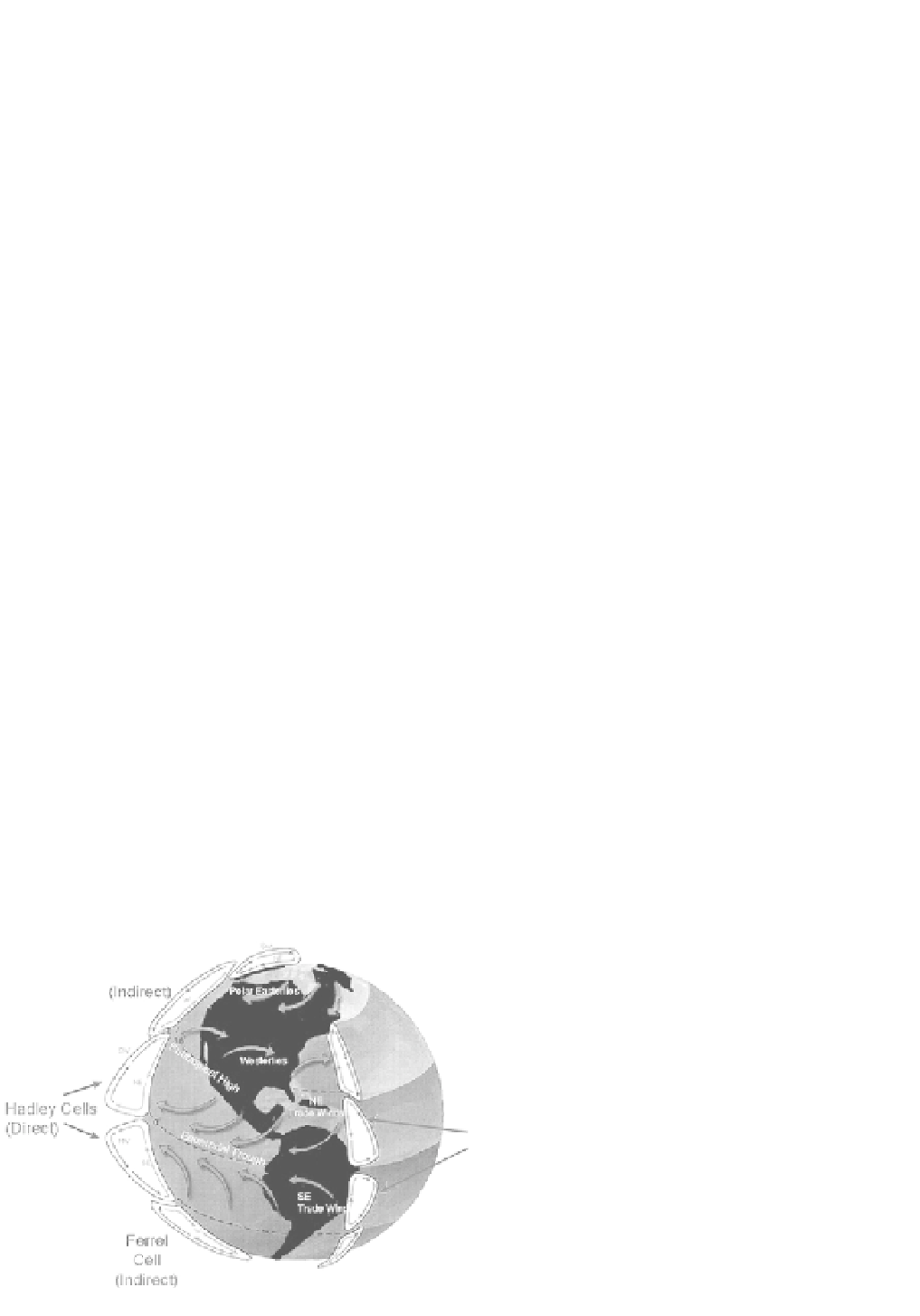Geoscience Reference
In-Depth Information
continually impart westerly (eastward) relative
momentum to the earth by friction, and it has been
estimated that they would cease altogether due to this
frictional dissipation of energy in little over a week if
their momentum were not continually replenished from
elsewhere. In low latitudes, the extensive tropical
easterlies are gaining westerly relative momentum by
friction as a result of the earth rotating in a direction
opposite to their flow (see Note 4). This excess is
transferred poleward with the maximum transport
occurring, significantly, in the vicinity of the mean
subtropical jet stream at about 250 mb at 30°N and 30°S.
cell, according to the above scheme, with the air sink-
ing at about 30° latitude as it is cooled by radiation.
However, this scheme is not entirely correct. The atmos-
phere does not have a simple heat source at the equator,
the trades are not continuous around the globe (see
Figure 7.13) and poleward upper flow occurs mainly at
the western ends of the subtropical high-pressure cells
aloft.
Figure 7.18 shows another thermally direct (polar)
cell in high latitudes with cold dense air flowing out
from a polar high pressure. The reality of this is doubt-
ful, but in any case it is of limited importance to the
general circulation in view of the small mass involved.
It is worth noting that a single direct cell in each
hemisphere is not possible, because the easterly winds
near the surface would slow down the earth's rotation.
On average the atmosphere must rotate with the earth,
requiring a balance between easterly and westerly winds
over the globe.
The mid-latitude
Ferrel cell
in Figure 7.18 is ther-
mally indirect and would need to be driven by the other
two. Momentum considerations indicate the necessity
for upper easterlies in such a scheme, yet aircraft and
balloon observations during the 1930s to 1940s demon-
strated the existence of strong westerlies in the upper
troposphere (see A.3, this chapter). Rossby modified the
three-cell model to incorporate this fact, proposing that
westerly momentum was transferred to middle latitudes
from the upper branches of the cells in high and low
latitudes. Troughs and ridges in the upper flow could, for
example, accomplish such horizontal mixing.
These views underwent radical amendment
from about 1948 onwards. The alternative means of
1 Circulations in the vertical and horizontal
planes
There are two possible ways in which the atmosphere
can transport heat and momentum. One is by circulation
in the vertical plane as indicated in Figure 7.18, which
shows three meridional cells in each hemisphere. The
low-latitude
Hadley cells
were considered to be analo-
gous to the convective circulations set up when a pan
of water is heated over a flame and are referred to
as
thermally direct
cells. Warm air near the equator
was thought to rise and generate a low-level flow
towards the equator, the earth's rotation deflecting these
currents, which thus form the northeast and southeast
trades. This explanation was put forward by G. Hadley
in 1735, although in 1856 W. Ferrel pointed out that
the conservation of angular momentum would be a
more effective factor in causing easterlies, because
the Coriolis force is small in low latitudes. Poleward
counter-currents aloft would complete the low-latitude
Polar Cell
(Direct)
Ferrel
Cell
(Indirect
)
Hadley Cells
(Direct)
Hadley Cells
Figure 7.18
Schematic three-cell model of the
meridional circulation and main wind belts in each
hemisphere.
Source
: Adapted from NASA.
Ferrel
Cell
(Indirect)






